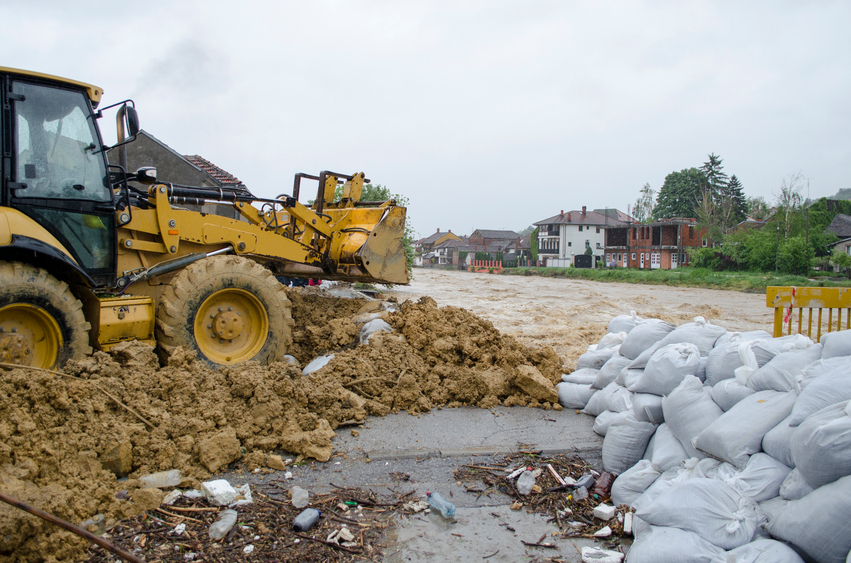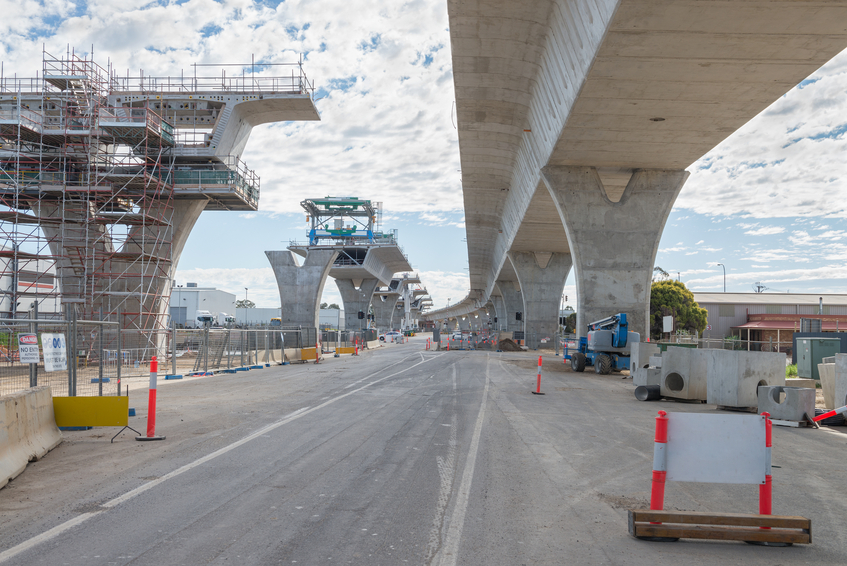Iowa Structural 10 PDH Discount Package 3
Design and Construction Guidance for Breakaway Walls (S03-021)
Determining the Cost/Benefit of Routine Maintenance Cleaning on Steel Bridges (S03-024)

This online engineering PDH course provides an overview of the methods necessary for elevating residential structures for flood protection.
One of the most common of all retrofitting techniques is to raise an entire existing superstructure above the design Flood elevation (DFE). When properly elevated, the living area is placed above all but the most severe floods.
Elevating the house offers long term advantages over wet and dry floodproofing. Since cleanup after the flood is often much easier and limited to areas outside of the living area, elevating the house is often simpler and more cost effective than wet and dry floodproofing. The information in this course could also be useful in projects where elevating the house is necessary, regardless of the reason for elevating.
This 4 PDH online course is intended for engineers, architects, contractors and planners who are with the planning and implementation of elevating residential structures for flood protection.
This PE continuing education course is intended to provide you with the following specific knowledge and skills:
- Understanding specific methods of elevating a residential structures for flood protection
- Knowing how to use the design flood elevation (DFE) in elevation design
- Learning about designing openings for intentional flooding of enclosed areas below the DFE
- Learning about elevating houses over crawlspace, basement, pier, pile and column foundations
- Learning about elevating Slab-on-Grade houses with and without raising the slab with the house
- Understanding how to elevate utilities of various types of houses
- Understanding how to construct new living areas (second story addition) over an existing foundation for a 1-story house
- Knowing how to evaluate changes to foundation and structural framing loads due to second story addition
- Knowing how to evaluate changes from increased wind loads due to increased height
In this professional engineering CEU course, you need to review the document titled, “A Guide to Elevating Homes for Flood Protection” which is based on the FEMA publication, Engineering Principles and Practices for Retrofitting Flood-Prone Residential Structures, Chapter 5E Elevation and a Case Study from Chapter 6 of the same.
Once you complete your course review, you need to take a multiple-choice quiz consisting of twenty five (25) questions to earn 5 PDH credits. The quiz will be based on this FEMA publication.
Upon successful completion of the quiz, print your Certificate of Completion instantly. (Note: if you are paying by check or money order, you will be able to print it after we receive your payment.) For your convenience, we will also email it to you. Please note that you can log in to your account at any time to access and print your Certificate of Completion.

This engineering online PDH course provides guidance on designing and constructing breakaway walls below elevated buildings located in coastal high hazard areas in accordance with the National Flood Insurance Program (NFIP).
Obstructions below an elevated building can significantly increase the potential for flood damage by increasing the surface area subject to wave impact and velocity flow. As such, NFIP regulations require that the area below the lowest floor of elevated buildings either be free of obstructions or have any enclosed areas be constructed of non-supporting breakaway walls, open lattice-work, or insect screening. The walls, lattice, or screening are intended to collapse under wave loads without causing collapse, displacement, or other structural damage to the elevated building or the supporting foundation system.
This 3 PDH online course is intended for structural and geotechnical engineers, as well as design and construction personnel involved in coastal design and construction projects.
This PE continuing education course is intended to provide you with the following specific knowledge and skills:
- Understanding NFIP regulations concerning breakaway walls
- Learning about Flood Insurance Considerations affecting rates and costs of NFIP flood insurance for elevated buildings
- Knowing the Performance of Breakaway Walls
- Understanding the function of breakaway walls as well as their impact on other building elements
- Learning about the three different design methods for breakaway walls
Upon successful completion of the quiz, print your Certificate of Completion instantly. (Note: if you are paying by check or money order, you will be able to print it after we receive your payment.) For your convenience, we will also email it to you. Please note that you can log in to your account at any time to access and print your Certificate of Completion.

This online engineering PDH course aims at identifying the key variables necessary in estimating the impact of regular washing of steel bridges on the paint and service life, recommending methods for recording data in order to most effectively estimate the benefits of bridge washing, and developing a framework to assess the impact of bridge washing on paint life.
Thirty years ago, when the environmental rules changed, the WSDOT stopped annual cleaning of steel truss bridges. Some cleaning was done after this time only to assist inspection crews or to determine what the cost would be to hand clean a steel truss bridge. WSDOT is investigating the feasibility of an annual steel truss bridge washing program. A pilot study was implemented in 2011 that will help to determine the benefits and environmental impacts of such a program.
This work builds on the pilot study to identify current bridge washing practices around the country and to select the measurements necessary to determine whether more regular washing has positive cost benefits. The research summarized in this course is a first step towards understanding and quantifying the benefits of a more regular bridge washing program on paint life and corrosion.
This 3 PDH online course is applicable to civil and structural engineers who are interested in assessing the impact of bridge washing on paint and service life, estimating the benefits of bridge washing, and improving the maintenance of steel bridges.
This PE continuing education course is intended to provide you with the following specific knowledge and skills:
- Familiarizing with the pilot bridge washing program, the conducted studies and the yielded results
- Gaining a general overview on the research and literature review concerning bridge maintenance
- Learning about the nationwide survey on bridge washing programs, and the responses in different States
- Exploring the bridge washing programs in different States including Iowa, Alaska, Kentucky, New York, New Hampshire, Missouri, Indiana
- Identifying the impact of regular bridge washing programs on paint life and corrosion
Upon successful completion of the quiz, print your Certificate of Completion instantly. (Note: if you are paying by check or money order, you will be able to print it after we receive your payment.) For your convenience, we will also email it to you. Please note that you can log in to your account at any time to access and print your Certificate of Completion.